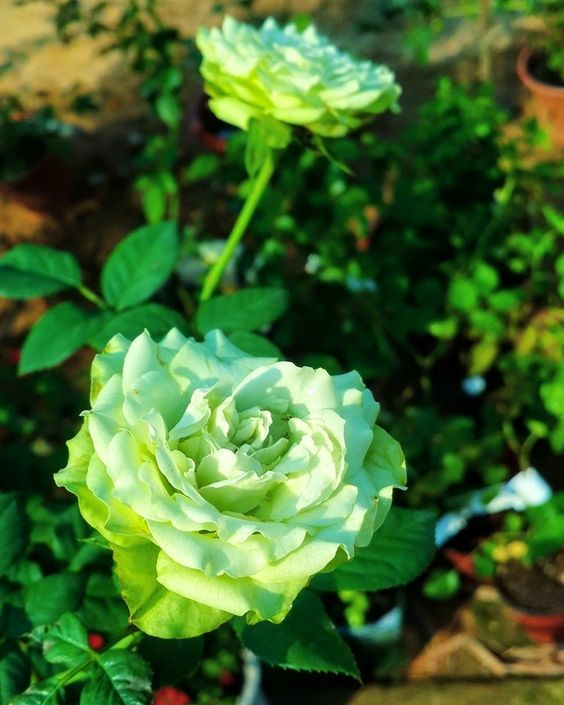In the diverse world of floriculture, green roses stand as a unique testament to nature’s palette and the unconventional beauty it can offer. Often overlooked in favor of more traditional hues, these enigmatic blossoms hold a charm that’s both subtle and striking, making them a symbol of rarity and distinctiveness.

The green rose, scientifically known as Rosa chinensis ‘Viridiflora,’ is not a result of dyeing or artificial manipulation. This variety naturally develops its verdant petals due to a genetic mutation. The absence of vibrant petals is compensated for by the rich, deep green of their foliage, making them a distinct choice for gardeners and floral enthusiasts seeking something out of the ordinary.

Symbolically, green roses convey a message of rejuvenation, abundance, and fertility. They are also associated with tranquility and peace, making them an excellent gift for occasions that call for a wish of harmony and prosperity. For instance, in a bouquet, green roses can add a touch of sophistication and a modern twist, breaking the monotony of traditional floral arrangements.

Their rarity also speaks volumes in the language of flowers. To gift a green rose is to acknowledge the unique and extraordinary nature of the recipient or the relationship. It’s a gesture that says, “You stand out in the most beautiful way.”

Moreover, green roses are not just a feast for the eyes. They are also a topic of interest among horticulturists and botanists. The ‘Viridiflora’ variety, with its peculiar characteristics, has become a subject of study to understand floral mutations and the genetic diversity within the Rosa species.

In landscaping, these roses offer a stunning contrast to the typical garden palette. They work beautifully in themed gardens, especially those designed around the idea of whimsy or the unusual. Their presence can transform a regular garden into a place of wonder, evoking a sense of enchantment.

In conclusion, the unconventional elegance of green roses lies in their rarity, their symbolic meanings, and the unique aesthetic they bring to gardens and floral arrangements. They remind us that beauty often lies in the unconventional, waiting to be appreciated and celebrated.







